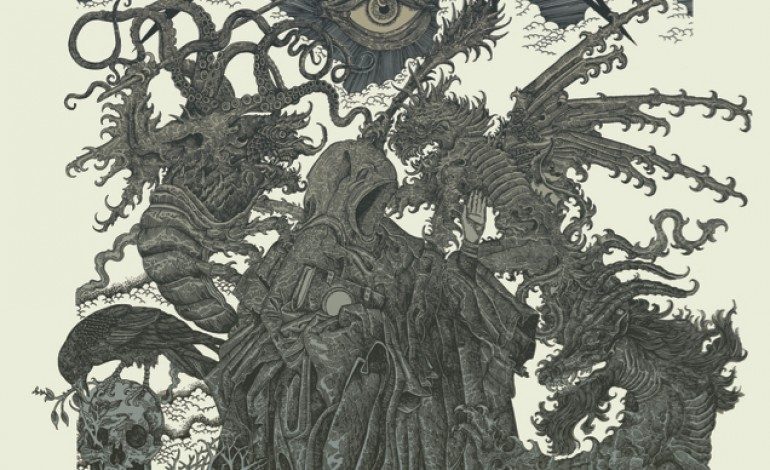

Short in Length, Epic in Scope
Traditionally, a rock n’ roll album is considered operatic (or, a “rock opera”) for featuring a narrative through-line in its song’s lyrics. Skeletonwitch’s newest EP, The Apothic Gloom, sounds operatic not because it tells a story, but because, despite its 22-minute length, it manages to express more ideas than many full-length metal albums across its four intricately-structured songs.
On paper, the album’s myriad of influences are all over the place: black, death and thrash metal are Skeletonwitch’s bread and butter, but some moments on the album are more reminiscent of Iron Maiden’s big guitar riffs, while others take a cue from Deafheaven’s modern, shoegaze-influenced take on heavy metal. Though Deafheaven has received practically blanket praise from all corners of the music world, some of their detractors have accused them of being pretentious, and therefore untrue to the grungier side of the metal world. Skeletonwitch proves that a more typical take on heavy metal can be just as ambitious and musically inventive by creating a cohesive sound out of their disparate influences, brought together by complex song structures that nonetheless sound cohesive.
Album closer “Red Death, White Light” for example, opens with a reverb-heavy tremolo picked riff accompanied by barked vocals, which leads into a harmonized lead guitar part before returning to black metal tremolo picking but with a guitar tone that would sound appropriate on a pop punk album. This is all in the first two and a half minutes of the song’s seven minute plus length. The rest of the album follows suit, taking the Skeletonwitch template—modern extreme metal subgenres meets classic heavy metal guitar heroics—and expanding it to encompass everything from doom-y soundscapes to djent-like guitar thumps.
Though the album is very ambitious, it’s likely going to appeal far more to existing fans than those not already inducted into the world of heavy metal. To appreciate the seamless display of Skeletonwitch’s amalgam of influences requires the foreknowledge of the difference between each of these niche subgenres. To a seasoned metal listener, the difference between a black metal riff and a thrash metal riff is obvious, but to an unfamiliar listener, it’s likely all going to sound like plain old metal. However, it’s testament to Skeletonwitch’s mastery of the genre that their unarguably experimental approach can sound so discreet.
Since the album is short, it’s easy to listen to repeatedly, and thanks to its complexity, there’s a lot for returning listeners to pick up on in each track. However, even though it begs a heady approach from listeners interested in Skeletonwitch’s genre experiments, this is primarily an album for headbangers. There’s no dumbed-down rock or clean vocals meant to appeal to a mainstream audience. Instead, the album maintains a hard rocking intensity from beginning to end.
